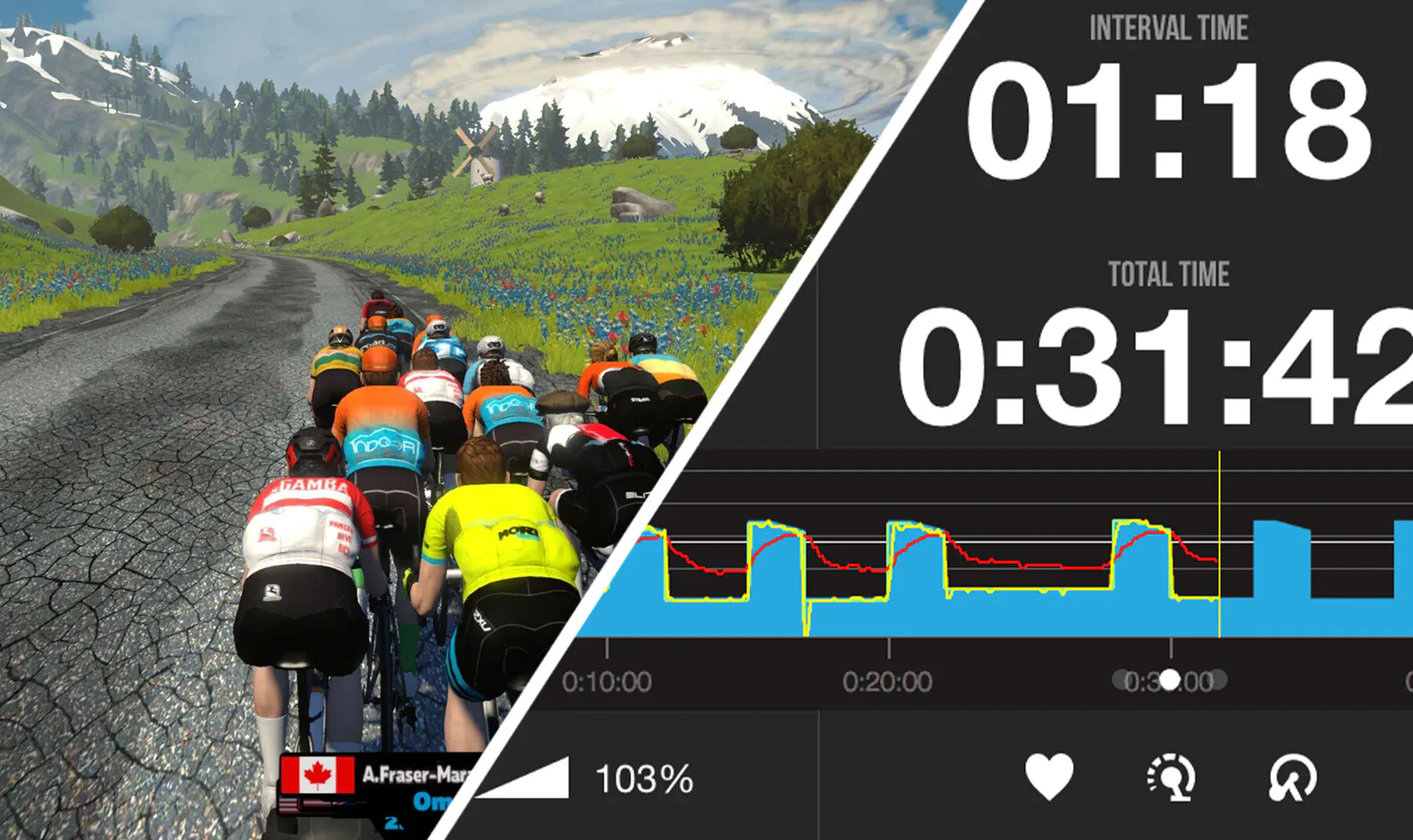Whether you're a commuter, a trail rider, a road racer, or a long-distance adventurer, the right bike saddle is the key to a good riding experience. The ideal saddle fits your body and riding style, which enhances comfort and improves riding efficiency. This basic guide will make it easier to choose the right saddle. We’ll also provide a list of our picks for the top saddle options on the market.
[button]Shop Bike Saddles[/button]
How to Choose a Bike Saddle
In general, there’s no major difference between saddles for road, gravel, or mountain bikes, even though some saddles may market themselves for specific types of riding. You may find that a “mountain bike” saddle feels good on your road bike or a “road saddle” feels good on your mountain bike. We suggest just focusing on finding a saddle that fits you and your riding style.
Finding a saddle that fits perfectly may require experimentation. But there are a few key guidelines that will help you narrow down your choices to saddles that are in the right ballpark.
What Size Bike Saddle Do You Need:
Saddles need to adequately support your sit bones, so width is the best place to start. If you don’t know your sit bone width, you will need to measure them.
- The key measurement is the distance between the center of your sit bones (ischial tuberosities). This is called your sit bone width.
- The sit bones should be fully supported by the saddle to prevent your soft tissue from being compressed.
- If a saddle is too narrow, it won’t support your sit bones which can lead to pain or numbness.
- If it's too wide, it can interfere with your legs and cause discomfort while pedaling.
Most bike shops have tools for measuring sit bones, but you can also do it at home using various methods. The most common is to sit on a material that will leave an impression (i.e. cardboard or tinfoil). Your sit bones will create two divots that you can measure from center to center.
Most adults usually have sit bones that are 90-160mm wide. For the best support, you want your saddle around 20-25mm wider than your sit bones. Most riders fit onto saddles that are 140-160mm wide, but there are plenty at the extremes who will need something wider or narrower.
How to Measure Sit Bone Width at Home:
Materials Needed:
- Corrugated cardboard, tin foil, or memory foam
- Pen or marker
- Tape measure
Step 1: Cut a piece of cardboard, layer up a few sheets of tin foil, or use memory foam that is wide enough to sit on. The material should compress when you sit on it.
Step 2: Sit on the cut piece with your full body weight, feet shoulder-width apart. Keep your knees at 90-degree angles.
Step 3: Slowly rock back and forth and side to side to fully settle into the material.
Step 4: You should see two deeper indents where your sit bones have pressed into the foam or cardboard. Mark the center of each with a pen.
Step 5: Measure the distance between the two marks in millimeters. This is your sit bone width.
Step 6: Add 20-25 mm to your measurement to find your ideal saddle width.
Saddle Length (Snub-nosed vs. Long Saddles):
As for length, the majority of saddles are in the 250-300mm range, and choosing length is generally a matter of personal preference.
- Most “standard” saddles are around 270-280mm, and this length will work for the majority of riders.
- Shorter (<270mm) “snub-nosed” saddles have shorter noses that tend to feel more comfortable for riders with more aggressive riding positions, where their handlebars are significantly lower than their saddle.
- Longer (>280mm) saddles have longer noses and allow more forward movement. These are good for riders who like to scoot around and regularly change positions while riding.
Saddle Shape (Curved vs. Flat Saddles):
Most bike saddles can be broadly classified as curved or flat. This refers to the shape from the nose to the tail of the saddle.
- Curved saddles provide a “pocket” for riders to settle into and can relieve pressure on soft tissue. Riders who prefer curved saddles tend to stay in one position while riding, rather than scooting back and forth. They are also good for riders who might lack hip and hamstring flexibility (i.e. they can’t bend over and touch their toes with legs straight) or riders using an aggressive riding position where the handlebars are significantly lower than the saddle.
- Flatter saddles tend to suit riders who prefer the feeling of sitting “on” a saddle rather than “in” a saddle. Flatter saddles make it easier to scoot back and forth to adjust your riding position. They tend to suit riders who have good hip and hamstring flexibility. Having good flexibility makes it easier to keep more weight on the sit bones rather than on soft tissue.
Saddles can also be curved or flat from side to side. In this case, flexibility is still the key determiner of which shape you might prefer, but more flexible riders (who can keep their sit bones supported when bending over) tend to like saddles that are more curved side-to-side while less flexible riders tend to like saddles that are flatter side-to-side that place less pressure on soft tissue.
Saddle Cutouts:
Many saddles have cutouts in the center where material has been removed to relieve or prevent excessive pressure on your soft tissue. Cutouts can be literal holes in the center of the saddle or pressure relief “channels” cut into the foam.
- If you’re unsure whether you need a saddle with a cutout, our general advice is to try saddles with some sort of a cutout before trying saddles without one. The vast majority of riders will find that a saddle with a cutout feels more comfortable and causes less pain or numbness.
- Riders struggling with numbness in their nether regions should look for a saddle with the largest cutout possible. The bigger the cutout, the more pressure relief on sensitive soft tissue.
- Some riders might find that the edges of saddle cutouts cause pinching or painful pressure points. If that’s the case, then it’s best to head in the other direction and look for smaller cutouts or even try a saddle with no cutouts.
Saddle Rail Material:
The saddle rail construction can vary from steel to titanium to carbon fiber. The only major difference between different rail materials is weight. Budget saddles tend to use steel or steel alloys, while more expensive saddles use titanium or carbon fiber to shed a few grams.
If you can afford it, going for titanium or carbon can be fun, but it’s unlikely you can notice the difference anywhere except on the scale. Note that carbon rails are oval rather than round, and require a compatible seatpost clamp to install.
Gender-Specific Saddles:
Saddles are generally considered unisex, and many women are comfortable in unisex saddles, but some brands do make women’s specific saddles to accommodate anatomical differences.
Some women’s specific saddles usually have larger cutouts designed to relieve more pressure on soft tissue. Some, like Specialized Mimic saddles, use extra soft foam instead of cutouts to relieve pressure. Some men might find these large cutouts or extra soft foam feel more comfortable too. You don’t need to get too hung up on whether a saddle is designed for men or women. If it fits, it fits.
Is a Wide Bike Seat More Comfortable? What About Flat or Curved Saddles?
Wider vs. Narrower Saddles
- There is no general rule. Saddles should match your sit bone width. The only way to know if a saddle is the right width is to measure your sit bones.
- Too wide of a saddle can cause chafing of the inner thighs. The ideal width matches your sit bone width with a little extra room.
- Too narrow of a saddle will cause discomfort by putting too much pressure on soft tissue.
- Most riders do best with a medium-width saddle in the 140-155mm range. Super wide saddles (170mm+) generally only work well for very casual, upright riding on cruisers and townies.
Flat vs. Curved Saddle Profiles
- Flat saddles evenly distribute pressure and allow riders to move around more easily. They’re good for riders with great flexibility and prefer to scoot back and forth a lot while riding to stay comfortable.
- Curved saddles cradle your soft tissue in a groove. They’re good for riders with less flexibility or who don’t move back and forth on the saddle much while riding.
- Moderate curvature is ideal for most riders.
Is Gel or Memory Foam Better for a Bike Saddle?
More padding DOES NOT mean more comfort. The biggest factors in saddle comfort are width and shape, so those are always the two factors to consider first. With the right width and shape, most riders will be happy with even very thin layers of padding.
When new riders are struggling with saddle discomfort, they tend to ask about saddles that use gel or memory foam. We generally try to steer riders away from these types of saddles. Saddles with extra thick padding are generally better for upright cruisers and townie bikes that won’t be ridden for long distances. Extra thick padding is often less comfortable for “serious” cycling because it doesn’t provide the necessary support for your sit bones and can increase pressure on soft tissue.
If you do want more padding, many brands offer specific models that have slightly increased or softer padding (e.g., Specialized Mimic and Elaston) or gel inserts (e.g., Specialized Gel). Recently, Specialized and Fizik have experimented with saddles made with 3D-printed foams (e.g., Specialized Mirror and Fizik Adaptive), and these are likely going to be the best option for riders who want the most comfortable padding possible but they are much more expensive than standard foam padding.
The Best Bike Saddles
Bike saddles are highly personal, and many riders end up trying multiple saddles before finding the one that works best for them. To make things as easy as possible we generally recommend most riders who are newer to saddle shopping to start with Specialized or Fizik saddles.
Specialized and Fizik are the two biggest and most popular saddle companies in the business, and they have a huge range of products that will fit nearly every rider. We even have a Specialized saddle guide specifically explaining how to choose from Specialized’s extensive line-up.
[button]Specialized Saddle Guide[/button]
Most Specialized and Fizik saddles come in narrow and wide options to fit different sit bone widths. There are also plenty of flat or curved and short or long options. Both also have 3D-printed foam models for riders who want ultimate comfort. Here are some of our favorites:
Best Snub-Nosed Saddles: Specialized Power & Fizik Argo
- Short length suits more aggressive riding positions
- Slight curve
- Large cutout
[product-block handle="specialized-power-comp-saddle"/]
[product-block handle="6558558322880-fizik-tempo-argo-r3-saddle-k-ium-rails-black"/]
[product-block handle="6178909716672-fizik-terra-argo-x3-saddle-k-ium-rails-black"/]
[product-block handle="specialized-power-exprert-mirror-saddle"/]
[product-block handle="7454134272192-specialized-power-pro-mirror-saddle"/]
[product-block handle="7476391182528-fizik-vento-argo-00-adaptive-saddle"/]
Best Curved Saddles: Specialized Romin EVO & Fizik Aliante
- Deeper curve to cradle soft tissue and prevent numbness
- Best for riders with less flexibility
[product-block handle="specialized-romin-evo-comp-gel-saddle"/]
[product-block handle="fizik-aliante-vs-saddle-142mm-k-ium-rails-black"/]
Best Flatter Saddles: Specialized Phenom / Bridge & Fizik Antares / Alpaca
- A flatter profile suits more upright riding positions or more flexible riders
[product-block handle="nc_-fizik-alpaca-terra-x5-saddle-145mm-2"/]
[product-block handle="7454107533504-specialized-bridge-comp-mimic-saddle"/]
[product-block handle="fizik-antares-vs-saddle-142mm-manganese-black"/]
[button]Shop Bike Saddles[/button]

























